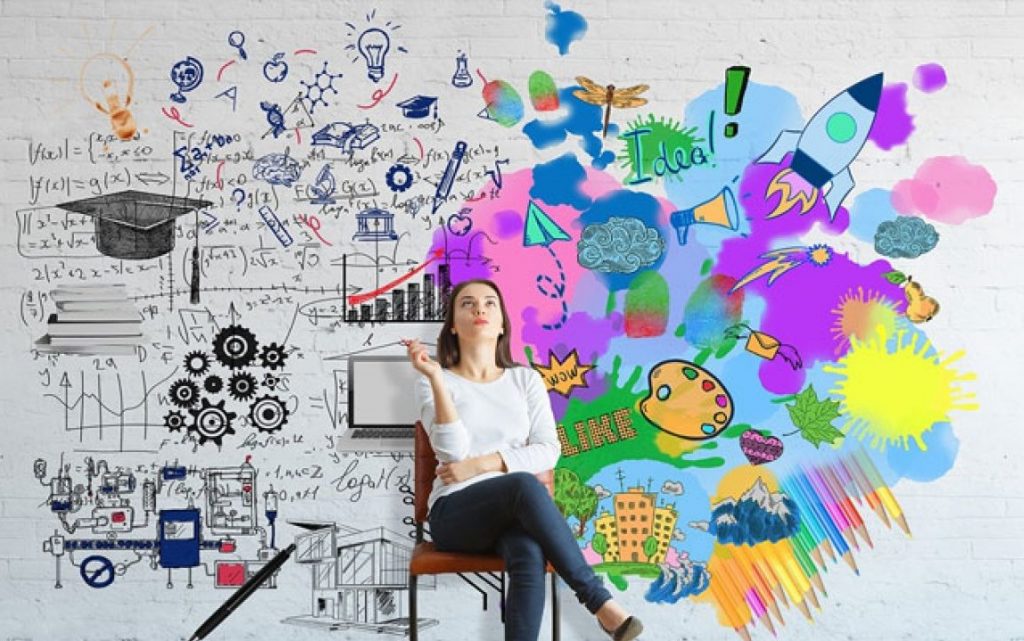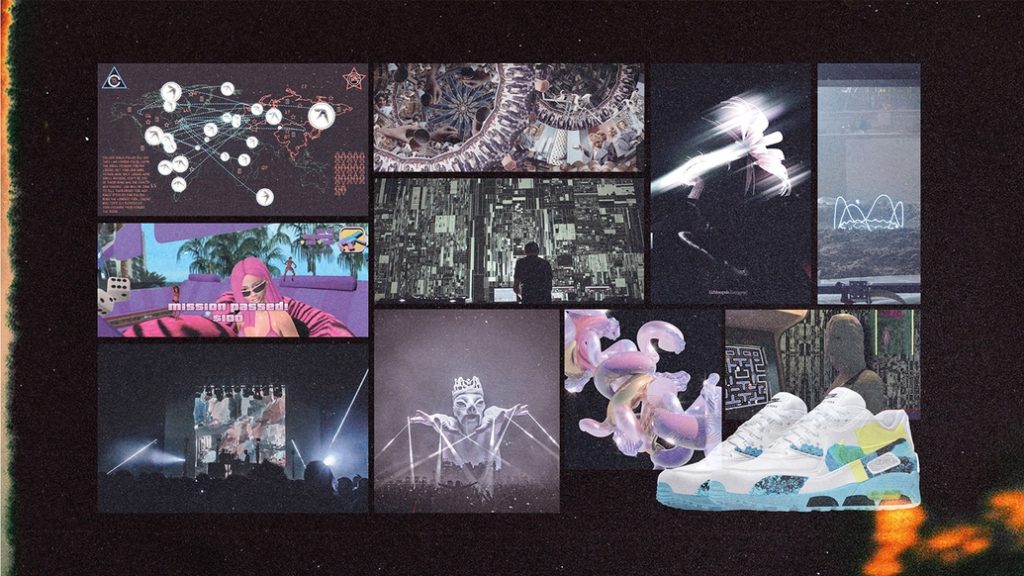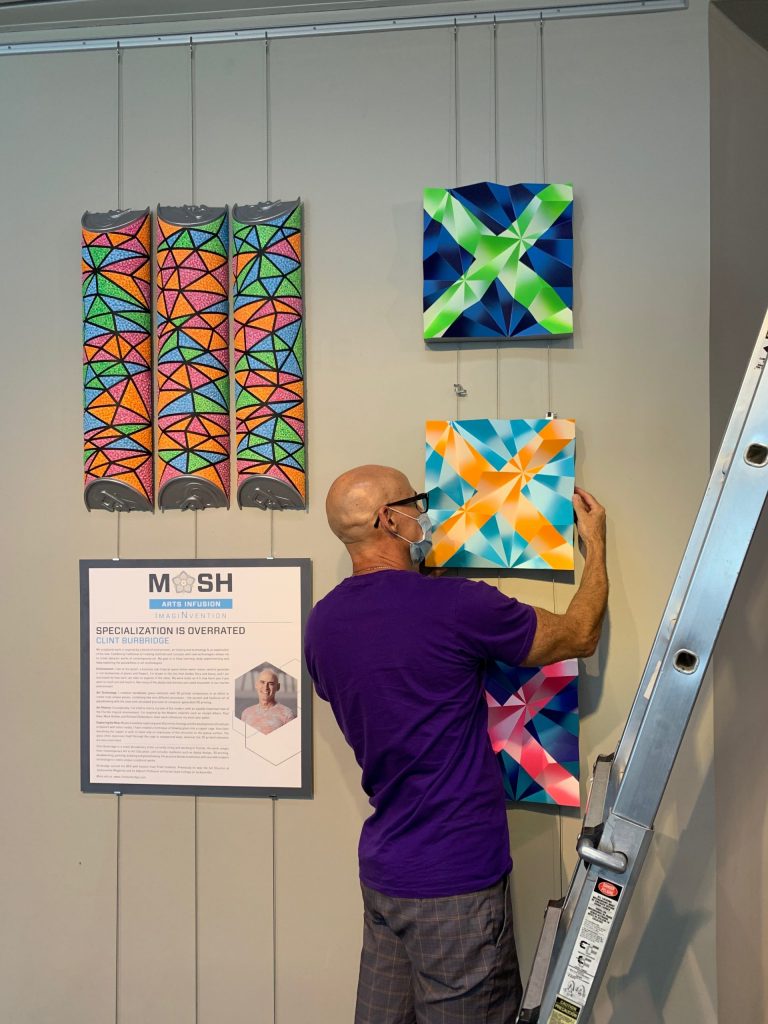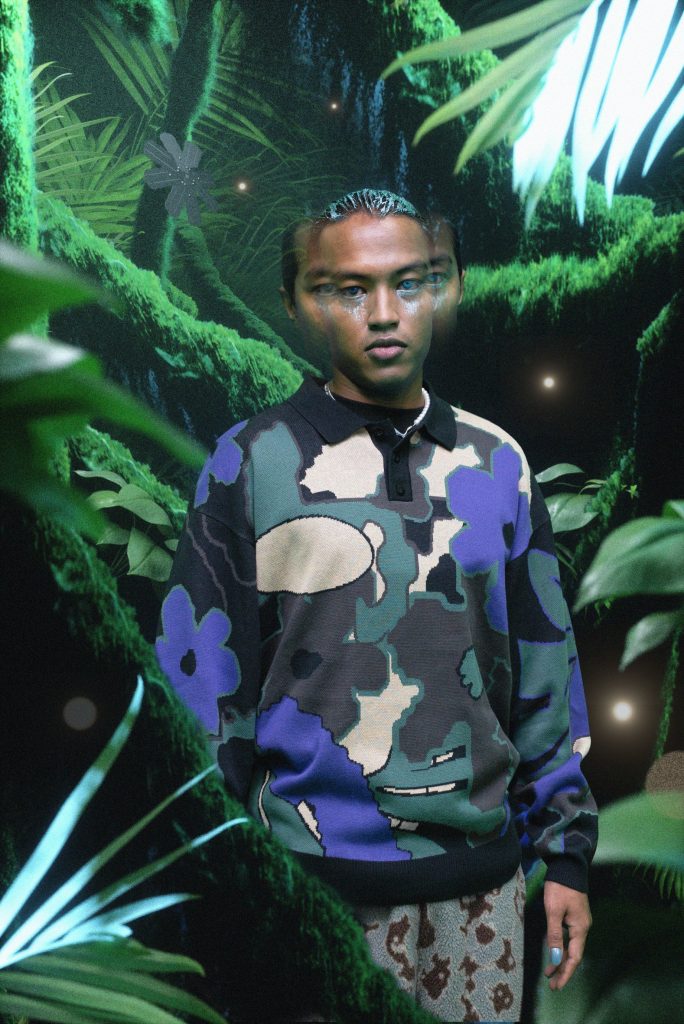In today’s world, where boundaries between different disciplines are becoming increasingly blurred, the intersection of music, art, and creativity has taken on a whole new level of importance. Exploring the connection between these three areas can lead to a new wave of cross-disciplinary inspiration that can transform our understanding of the world and ourselves. By delving into the depths of music and art, we can tap into a wellspring of creativity that will not only enhance our own lives, but also help us connect with others on a deeper level. This article will take you on a journey of discovery, exploring the power of music and art to inspire and foster creativity in all areas of your life. Prepare to be amazed as we dive into the fascinating world of cross-disciplinary inspiration!

This image is property of www.basicknowledge101.com.
I. The Connection Between Music, Art, and Creativity
A. The influence of music on art
Music has always been a powerful source of inspiration for artists from various disciplines, including visual art. When you listen to a piece of music, it has the ability to evoke intense emotions and create a mood that can be translated into visual expressions. The melodies, harmonies, and lyrics of a song can ignite your imagination and stimulate your creative juices.
Artists often use music as a starting point to explore different themes and concepts. The rhythms and melodies in a song can inspire the brushstrokes and color choices in a painting, or the sculptural forms in a sculpture. The dynamic and ever-changing nature of music can translate into dynamic and fluid compositions that capture the essence of the music.
B. The influence of art on music
Just as music can inspire art, art can also have a profound impact on music. Visual art, with its bold colors, intricate details, and powerful symbolism, can inspire musicians to create melodies, harmonies, and lyrics that mirror the emotions and themes depicted in the artwork. The visual elements in art can be translated into musical elements, such as the use of contrasting textures, rhythms, and dynamics.
Art can also shape the way musicians conceptualize and present their music. Album covers, stage designs, and music videos are all examples of how visual art is integrated into the world of music. These visual representations can enhance the overall experience of the music and create a deeper connection between the artist and the audience.
C. The symbiotic relationship between music and art
Music and art have a symbiotic relationship, with each reinforcing and complementing the other. They share a common language of emotions and expressions, and when combined, they can create a multi-dimensional and immersive experience for both the creator and the audience.
When an artist is inspired by music, they bring a unique interpretation and perspective to the visual representation, breathing new life into the music. Similarly, when musicians incorporate visual elements into their work, they add depth and dimension to their compositions, creating a more immersive and captivating experience.
D. How creativity ties it all together
At the core of the connection between music, art, and creativity is the fundamental human desire to express oneself. Both music and art provide outlets for creative expression, allowing individuals to tap into their unique perspectives, emotions, and ideas.
Creativity is the driving force behind the exploration of this interconnectedness. It is through the creative process that artists and musicians are able to explore the depths of their imagination, draw inspiration from different sources, and push the boundaries of what is possible.
II. How Music Inspires Artistic Creativity
A. Expressing emotions through visual art inspired by music
One of the most profound ways in which music inspires artistic creativity is through the expression of emotions. Music has the ability to evoke a wide range of emotions, from joy and excitement to sadness and contemplation. When artists listen to music, they can tap into these emotions and use them as a foundation for their visual art.
Visual art inspired by music can capture the essence of a particular song or genre, creating a visual representation of the emotions and moods conveyed through the music. Through their art, artists can convey the energy, rhythm, and intensity of a piece of music, allowing the audience to experience the same emotions and sensations.
B. Translating musical rhythms and melodies into visual elements
Music is inherently rhythmic, with patterns of beats and melodies that create a sense of movement and flow. When artists listen to music, they can translate these rhythms and melodies into visual elements, such as lines, shapes, and patterns.
For example, a fast-paced, upbeat song may inspire an artist to create a painting with bold, energetic brushstrokes and dynamic compositions. On the other hand, a slow, melancholic melody may evoke softer, more delicate forms and muted color palettes.
C. Exploring the connection between lyrics and visual storytelling
The lyrics of a song often tell a story, painting vivid imagery and creating a narrative that listeners can relate to and connect with. When artists listen to music with lyrics, they can tap into the power of visual storytelling, using their artistic skills to bring those narratives to life.
Visual art inspired by lyrics can capture the essence of the story being told, whether it’s a personal experience, a social commentary, or a fictional tale. Artists can delve into the themes and emotions conveyed through the lyrics, creating visual representations that resonate with the audience on a deeper level.
D. Using music as a muse to spark innovative artistic ideas
Music has a unique way of stimulating the imagination and inspiring innovative ideas. When artists listen to music, they enter a state of flow where their minds are free to wander and explore new possibilities. This state of heightened creativity can lead to the emergence of fresh ideas and novel approaches to artistic expression.
Artists often use music as a muse to spark their creativity, allowing the melodies, harmonies, and lyrics to guide their artistic process. By immersing themselves in the music, they can tap into a wellspring of inspiration and unleash their creative potential.

This image is property of djmag.com.
III. Discovering Artistic Inspiration in Music
A. Finding visual elements in musical compositions
Musical compositions are rich with visual elements that can serve as a catalyst for artistic inspiration. Artists can listen to instrumental music and find visual cues within the melodies, harmonies, and rhythms.
For example, the rising and falling of a melody can evoke images of flowing rivers or soaring birds, while the percussive beats can translate into strong and bold lines. By closely listening to the nuances of the music, artists can uncover the visual elements hidden within the compositions.
B. Infusing paintings and sculptures with musical themes
Artists have the ability to infuse their paintings and sculptures with musical themes, creating a synthesis of music and visual art. The emotions, moods, and themes conveyed by music can be translated into the forms, colors, and textures of a visual artwork.
For instance, an artist may choose to use vibrant colors and abstract shapes to represent the liveliness and energy of a jazz composition. Alternatively, they may opt for muted tones and soft textures to capture the tranquility and introspection of a classical piece.
C. Uncovering storytelling through musical notes and harmonies
Just as music can tell a story through its lyrics and melodies, visual art can also convey narratives through the arrangement of visual elements. Artists can listen to music and uncover the underlying story being told, using their artistic skills to create visual representations of the musical notes and harmonies.
By studying the structure and progression of a musical composition, artists can identify key moments, transitions, and climaxes that can be translated into visual storytelling. The ebb and flow of the music can be mirrored in the composition of the artwork, creating a cohesive and harmonious narrative.
D. Using music as a vehicle to explore different artistic styles
Music has the ability to transcend genres and styles, allowing artists to explore different artistic approaches and experiment with diverse techniques. Artists can use music as a vehicle to push their artistic boundaries, incorporating elements from different styles and genres into their work.
For example, a classical painter may be inspired by the rhythm and intensity of rock music, infusing their traditional techniques with a contemporary edge. Conversely, a graffiti artist may draw inspiration from the harmonies and melodies of jazz, translating the improvisational nature of the music into their spray-painted creations.
IV. Collaborations and Cross-Disciplinary Projects
A. Artists and musicians collaborating on joint exhibitions
Collaborations between artists and musicians have become increasingly common, with joint exhibitions showcasing the combined talents of both disciplines. These collaborations allow artists and musicians to merge their creative visions and talents, creating a seamless and immersive experience for the audience.
In joint exhibitions, visual art and music are integrated to enhance and amplify each other. The artworks and musical compositions may be specifically created to complement one another, with the visual elements reflecting and responding to the music, and vice versa.
B. Creating multimedia experiences that engage multiple senses
The intersection of music and art has paved the way for the creation of multimedia experiences that engage multiple senses. Artists and musicians are now combining visuals, music, and other sensory elements to create immersive and interactive installations and performances.
These multimedia experiences take the audience on a journey through a rich tapestry of visual and auditory stimuli. The combination of music, visual art, and other sensory elements, such as lighting and interactive technology, creates a multi-dimensional and transformative experience that transcends traditional artistic boundaries.
C. The fusion of music and art in theatrical performances
Theatrical performances provide a platform for the fusion of music and art, where live performances, visual effects, and storytelling come together to create a captivating and immersive experience. Musicals, operas, and other theatrical productions often incorporate visual art elements into their sets, costumes, and choreography.
Through the integration of music and art, theatrical performances are able to convey narratives and emotions in a way that engages both the auditory and visual senses. The synergy between music, visual art, and performance brings the story to life, creating a powerful and memorable experience for the audience.
D. Cross-disciplinary festivals celebrating creativity in various forms
Cross-disciplinary festivals have emerged as platforms for celebrating and showcasing the creative potential of music and art. These festivals bring together artists, musicians, performers, and creatives from various disciplines to collaborate and explore new frontiers in creative expression.
These festivals often feature a diverse range of performances, exhibitions, workshops, and interactive installations, showcasing the intersection of music and art in exciting and innovative ways. Through these cross-disciplinary collaborations, artists and musicians are able to share their unique perspectives and inspire the audience to embrace creativity in all its forms.

This image is property of i0.wp.com.
V. Teaching Creativity Through Music and Art
A. Integrating music and art education in primary schools
Integrating music and art education in primary schools can play a crucial role in nurturing creativity and fostering a love for the arts from a young age. By providing children with opportunities to explore the connection between music and art, educators can unlock their creative potential and encourage interdisciplinary thinking.
Music and art classes can involve hands-on activities that allow children to create visual art inspired by the music they listen to or compose their own music to accompany their artwork. By engaging in these cross-disciplinary activities, children develop their creative skills, enhance their ability to express themselves, and gain a deeper appreciation for the arts.
B. Promoting creativity through cross-disciplinary projects in universities
Universities can play a pivotal role in promoting creativity and cross-disciplinary collaboration through the integration of music and art into their curricula. By offering courses and projects that encourage students to explore the connection between music and art, universities can foster a culture of creative exploration and innovation.
Cross-disciplinary projects can involve collaborations between students from different disciplines, such as music composition, visual arts, and digital media. These projects challenge students to think outside the box, explore new artistic approaches, and develop a deeper understanding of the interconnectedness between music and art.
C. Exploring the benefits of creative expression in therapy and healing
Creative expression through music and art has been recognized as a powerful tool for therapy and healing. Music therapy and art therapy have been used to help individuals cope with trauma, manage stress, and improve their overall well-being.
Through creative expression, individuals are able to tap into their inner emotions, process their experiences, and find solace and healing. Music and art open up channels of communication that go beyond words, allowing individuals to express themselves in ways that may be difficult to verbalize.
D. Enriching personal growth and self-discovery through artistic pursuits
Engaging in artistic pursuits, such as playing a musical instrument or creating visual art, can enrich personal growth and self-discovery. Music and art provide individuals with a space for self-expression, exploration, and experimentation, allowing them to connect with their inner selves and explore different facets of their identity.
Through artistic pursuits, individuals can develop their creativity, sharpen their problem-solving skills, and enhance their ability to think critically. The process of creating music or art can be cathartic, empowering individuals to express their thoughts, emotions, and experiences in a unique and meaningful way.
VI. Examples of Successful Cross-Disciplinary Inspiration
A. The collaboration between musician Björk and visual artist Chris Cunningham
One notable example of successful cross-disciplinary inspiration is the collaboration between musician Björk and visual artist Chris Cunningham. Their collaboration resulted in the creation of groundbreaking music videos that pushed the boundaries of both music and visual art.
Björk’s avant-garde music and experimental approach to songwriting provided the foundation for Chris Cunningham’s visually stunning and technologically innovative music videos. Together, they created visually captivating narratives that enhanced and amplified the emotional impact of Björk’s music.
B. The influence of music on the works of renowned painter Jackson Pollock
Renowned painter Jackson Pollock drew inspiration from music in his abstract expressionist artworks. Pollock was known for his energetic and spontaneous painting style, often referred to as ‘action painting.’
Many art critics have noted the similarities between Pollock’s paintings and the rhythms and improvisation found in jazz music. Pollock’s paintings, with their rhythmic lines and energetic brushstrokes, evoke a sense of movement and intensity that mirrors the improvisational nature of jazz.
C. The incorporation of art into music videos in the pop music industry
The pop music industry has embraced the fusion of music and art in its music videos, creating visually stunning and narrative-driven experiences for the audience. Music videos often incorporate elements of visual art, such as animation, painting, and sculpture, to enhance the storytelling and immerse the viewers in a visual feast.
Artistic collaborations between musicians, directors, and visual artists have resulted in iconic music videos that have become cultural touchstones. These music videos showcase the powerful synergy between music and art, capturing the imagination and leaving a lasting impression on the audience.
D. Cross-disciplinary exhibits showcasing the intersection of music and art
Cross-disciplinary exhibits have become popular platforms for showcasing the intersection of music and art. These exhibits bring together artists, musicians, and creatives from various disciplines to create immersive and thought-provoking installations that engage the audience on multiple sensory levels.
Art installations may incorporate elements of music, such as synchronized soundscapes or live performances, to create a multi-dimensional experience. Similarly, musicians may collaborate with visual artists to create interactive and visually stunning performances that transcend traditional concert settings.

This image is property of themosh.org.
VII. Breaking Barriers and Unleashing Creative Potential
A. Embracing experimentation and unconventional approaches
Breaking barriers and unleashing creative potential requires embracing experimentation and unconventional approaches. Creativity thrives when individuals are willing to step outside their comfort zones, push the boundaries of what is considered normal, and explore new artistic territories.
By experimenting with different mediums, techniques, and styles, artists and musicians can unlock new possibilities and discover novel ways of expression. Embracing experimentation allows for personal growth, the exploration of untapped potential, and the development of a unique artistic voice.
B. Encouraging exploration of new mediums and techniques
To unleash creative potential, it is essential to encourage the exploration of new mediums and techniques. Artists and musicians should be open to learning and experimenting with different tools, materials, and technologies that can expand their creative horizons.
Exploring new mediums and techniques not only broadens an artist’s skill set but also provides opportunities to approach their art from different angles. By venturing into uncharted territory, artists and musicians can discover new ways of working, develop fresh perspectives, and unlock hidden aspects of their creativity.
C. Challenging traditional boundaries between music and art
Challenging traditional boundaries between music and art opens up space for new and exciting possibilities. As artists and musicians, it is important to question and redefine what is considered ‘acceptable’ or ‘normal’ in terms of artistic expression.
By blurring the lines between music and art, artists and musicians can create hybrid forms of creative expression that resonate with a modern and diverse audience. This encourages a more inclusive and fluid understanding of creativity and allows for the emergence of innovative and groundbreaking works.
D. Inspiring individuals to broaden their creative horizons
To break barriers and unleash creative potential, it is crucial to inspire individuals to broaden their creative horizons. Artists and musicians can play a pivotal role in this process by sharing their own experiences, stories, and creative journeys.
By sharing their knowledge, insights, and techniques, artists and musicians encourage others to embrace creativity in their own lives. They inspire individuals to step outside their comfort zones, explore new artistic endeavors, and discover the transformative power of music and art.
VIII. Overcoming Challenges in Cross-Disciplinary Collaboration
A. Communication barriers between artists and musicians
Cross-disciplinary collaboration can present communication challenges, as artists and musicians may have different vocabularies, perspectives, and ways of expressing themselves. It is important to establish clear and open lines of communication to ensure that everyone involved in the collaboration is on the same page.
Artists and musicians should actively listen to each other, seek clarity when needed, and be open to discussing and exploring ideas together. This collaborative approach fosters mutual understanding, improves the exchange of creative ideas, and enhances the overall outcome of the project.
B. Balancing artistic visions and maintaining cohesive collaborations
In cross-disciplinary collaborations, balancing artistic visions can be a delicate task. Each individual brings their own unique perspective, style, and creative vision to the table, and finding a cohesive direction that respects and merges these visions is crucial.
Maintaining open and respectful dialogue is key to navigating artistic differences and finding common ground. Artists and musicians should be willing to compromise, adapt, and find creative solutions that allow everyone’s artistic voice to be heard and appreciated.
C. Addressing differing creative processes and timelines
Artists and musicians often have different creative processes and timelines. While artists may prefer to work at their own pace, musicians may be driven by strict deadlines and time constraints. It is important to acknowledge and respect these differences in order to maintain a harmonious and productive collaboration.
Effective communication and planning can help address these challenges. By establishing clear timelines, setting realistic expectations, and maintaining open lines of communication, artists and musicians can find a balance that respects the needs and creative processes of all parties involved.
D. Nurturing a supportive and inclusive environment
Cross-disciplinary collaboration thrives in a supportive and inclusive environment. Artists and musicians should foster an atmosphere of respect, trust, and creativity, where everyone feels valued and heard.
Creating a safe and inclusive space encourages individuals to express their ideas and opinions freely, fostering a collaborative spirit and allowing for the emergence of innovative and groundbreaking works. By nurturing this environment, artists and musicians can overcome challenges and create transformative cross-disciplinary projects that exceed expectations.

This image is property of urbanstreetculture.co.za.
IX. Finding Personal Inspiration in the Intersection of Music and Art
A. Reflecting on the emotional impact of music and art
To find personal inspiration in the intersection of music and art, it is important to reflect on the emotional impact that both mediums have on your life. Take the time to listen to music that moves you to the core, engage with visual art that resonates with your soul, and consider the emotions and thoughts these experiences evoke.
By reflecting on the emotional impact of music and art, you can gain insights into your own creative preferences and triggers. Pay attention to the themes, moods, and techniques that speak to you on a deeper level, as they can serve as a compass for your own artistic explorations.
B. Exploring individual interpretations and connections
The beauty of art lies in its subjective nature – each individual interprets and connects with art in their own unique way. When exploring the intersection of music and art, take the time to explore your own individual interpretations and connections.
Consider how a particular song or visual artwork makes you feel, the memories and associations it evokes, and the personal meaning it holds for you. By delving into the realm of personal interpretation, you can uncover hidden layers of inspiration that resonate with your own creative journey.
C. Incorporating music and art in daily life for motivation
To truly harness the inspiration found in the intersection of music and art, it is important to incorporate these mediums into your daily life. Surround yourself with music that inspires you, whether it’s through playlists, live performances, or immersive experiences.
Similarly, expose yourself to visual art that speaks to you, whether it’s through museum visits, art books, or online galleries. By immersing yourself in music and art on a regular basis, you create a fertile ground for your own creative ideas to bloom.
D. Seeking inspiration from the cross-pollination of artistic realms
Finally, seek inspiration from the cross-pollination of artistic realms. Explore the works of artists who have successfully merged music and art, and study their techniques, styles, and creative journeys.
By embracing the interdisciplinary nature of creativity, you open yourself up to new artistic possibilities and unprecedented inspiration. Allow yourself to draw from various artistic realms, experiment with different ideas and techniques, and let the harmonious fusion of music and art inspire you to reach new heights in your own creative endeavors.
X. Conclusion
A. Embracing the transformative power of music and art
Music and art possess a transformative power that allows individuals to express themselves creatively and connect with the world on a deeper level. By embracing the intersection of music and art, individuals can tap into their own creative potential and open doors to new artistic horizons.
B. Encouraging cross-disciplinary inspiration in personal growth
Cross-disciplinary inspiration between music and art enriches personal growth by encouraging individuals to explore diverse art forms, perspectives, and techniques. By embracing this cross-pollination of ideas, individuals can broaden their creative horizons, nurture their artistic voice, and unlock untapped creative potential.
C. Unleashing creativity through the exploration of diverse art forms
The exploration of diverse art forms, such as music and visual art, sparks creativity and allows individuals to think outside the box. By immersing themselves in the world of music and art, individuals can find new sources of inspiration, challenge traditional boundaries, and discover innovative approaches to their creative pursuits.
D. Embodying the harmonious fusion of music, art, and creativity
In embodying the harmonious fusion of music, art, and creativity, individuals can find fulfillment, joy, and self-expression. By nurturing their creative spirits, embracing new artistic collaborations, and pushing their own boundaries, individuals can tap into the transformative power of music and art, and create works that resonate with their own unique voice.


